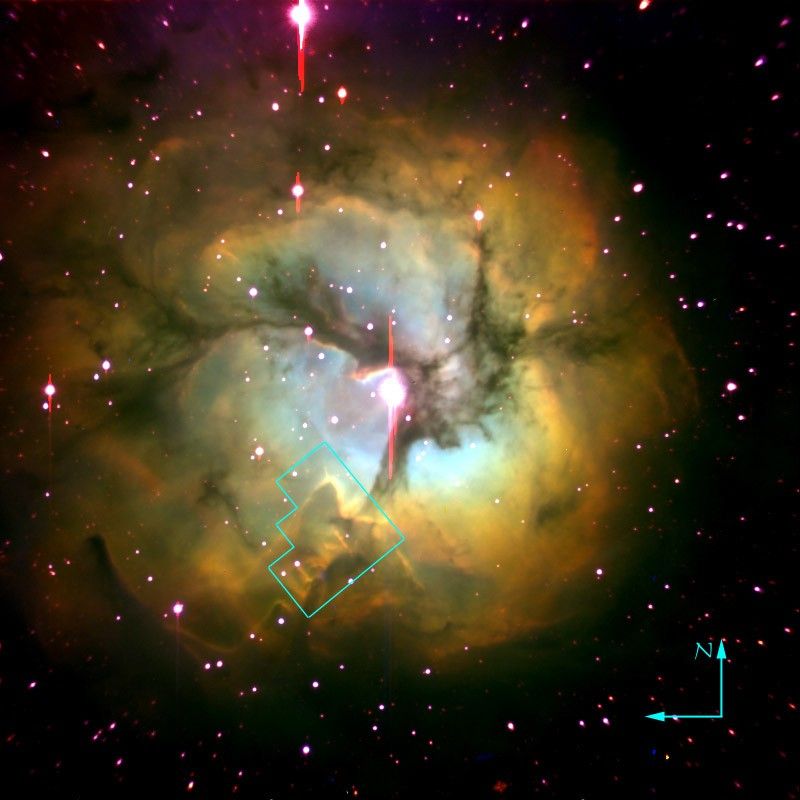1 min read
Star Birth in the Trifid Nebula
HUBBLE IDENTIFIES SOURCE OF ULTRAVIOLET LIGHT IN AN OLD GALAXY Video File October 26, 1999
Contents 1) VIDEO ZOOM INTO M32: Video sequence begins with a ground-based image of M32 (seen just above the large central galaxy M31), ZOOM to ground-based image of M32, continue the ZOOM to the Hubble Space Telescope Imaging Spectrograph (STIS) image of M32's core.
2) HUBBLE IMAGE OF M32'S CORE: Hubble Space Telescope's exquisite resolution has allowed astronomers to resolve, for the first time, hot blue stars deep inside an elliptical galaxy. The swarm of nearly 8,000 blue stars resembles a blizzard of snowflakes near the core (lower right) of the neighboring galaxy M32, located 2.5 million light-years away in the constellation Andromeda.
The observations, taken in October 1998, were made with the camera mode of the Space Telescope Imaging Spectrograph (STIS) in ultraviolet light.
3) GROUND-BASED COLOR IMAGE OF M31 and M32
4) BLACK AND WHITE GROUND-BASED IMAGE OF M32 (with the STIS field outlined)
- Release DateNovember 9, 1999
- Science ReleaseThe Trifid Nebula: Stellar Sibling Rivalry
- CreditImage: NASA and Jeff Hester (Arizona State University); Video: Bryan Preston (Allied Signal and STScI), NASA and Thomas M. Brown, Charles W. Bowers, Randy A. Kimble, Allen V. Sweigart (NASA Goddard Space Flight Center) and Henry C. Ferguson (STScI), Tony and Daphne Hallas, and Bill Keel (University of Alabama)
Related Images & Videos

The Trifid Nebula: Stellar Nursery Torn Apart By Radiation From Nearby Star
This NASA Hubble Space Telescope image of the Trifid Nebula reveals a stellar nursery being torn apart by radiation from a nearby, massive star. The picture also provides a peek at embryonic stars forming within an ill-fated cloud of dust and gas, which is destined to be eaten...
Share
Details
Claire Andreoli
NASA’s Goddard Space Flight Center
Greenbelt, Maryland
claire.andreoli@nasa.gov
































